During our trip to Vienna i got attracted to visiting Hundertwasser haus just by looking at some pictures. I was pretty intrigued and truth be told i hardly knew anything about the artist himself before this trip. On the last day of our Vienna trip we made our way to Hundertwasserhaus by tram. It is not exactly in the tourist area but it is pretty famous so be prepared to find a lot of tourists there. Well for those of you who are as ignorant as me, Friedensreich Hundertwasser was an acclaimed and enviromentally conscious Austrian artist and architect.

Presenting Hundertwasser huas – Bet you are intrigued as well 😉
All about Hundertwasser haus
Hundertwasser haus located in Landstrasse district is the artist’s most famous work. It is actually a very colorful apartment building where no two apartments look the same. The apartments are used as residences so you can only see the building from the outside. There is no place for straight lines in his work. It reminded me a little of Gaudi’s works in Barcelona. Even the ground is undulating at many places. To me it felt like the kid in Hundertwasser had drawn and painted the place and the architect in him had implemented it and made sure it was still structurally strong. After all, all of us as kids are much more creative and our imagination is not confined within the box. But somewhere along the line as we all progress into adulthood we start to think that pillars have to be straight and boring, staircases have to follow the usual pattern of straight lines and the windows on the facade of a building have to be of the same size. Well, not a chance for any monotonous patterns or grid lines in the works of Hundertwasser. He has managed to make even the seemingly mundane things look very artistic and beautiful in a building. I will let the pictures do the rest of the talking.
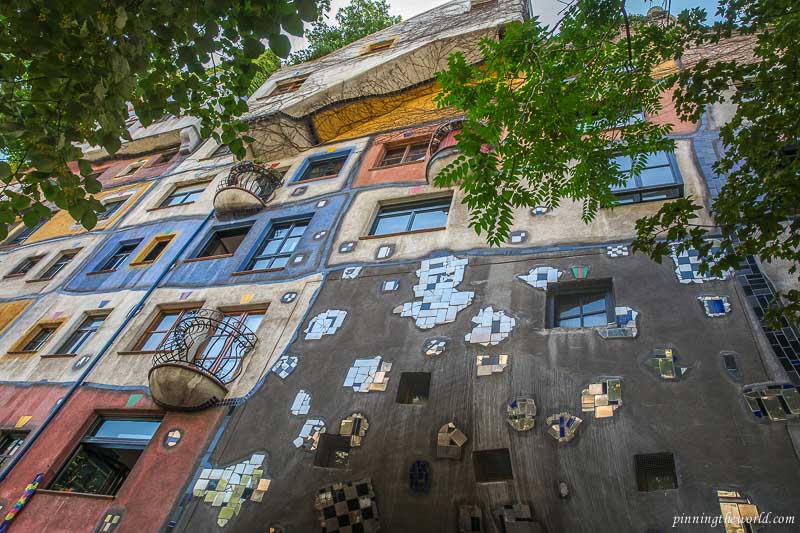
Colourful and quirky, complete with silver mosaics
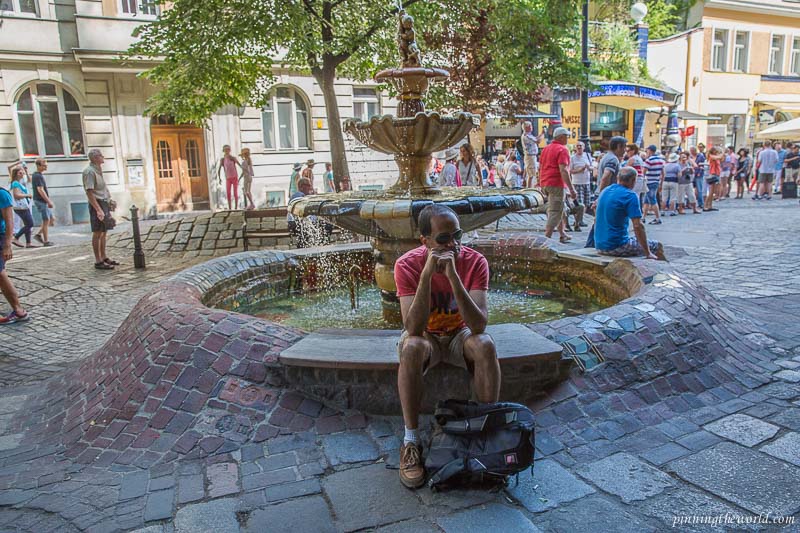
A pensive Sridhar, taking it all in

Who would have thought something as mundane as a pillar could be so refreshing…
Using existing building fabric and elements of nature
A notable thing about Hundertwasser is that he tried to use the existing building fabric in this works instead of tearing down the old buildings and starting from scratch. He just improved it by adding and changing the building and introducing some new colourful design elements. Talk about innovative recycling in architecture! Being an environment conscious artist he has incorporated elements of nature like trees, plants and grass in this apartment building. We did see plants popping out of the windows and balconies and vines growing on the facade at many places. But the pictures of the building also showed a roof terrace with even more greenery. This not only provides home for the birds but also improves the aesthetics for the neighbours. I guess he aspired to create a nature inspired home for the city dwellers. This also means that his buildings look different in each season. I saw some amazing photos of Hundertwasser haus in spring, autumn and winter. Needless to say it looked enchanting in all of them.
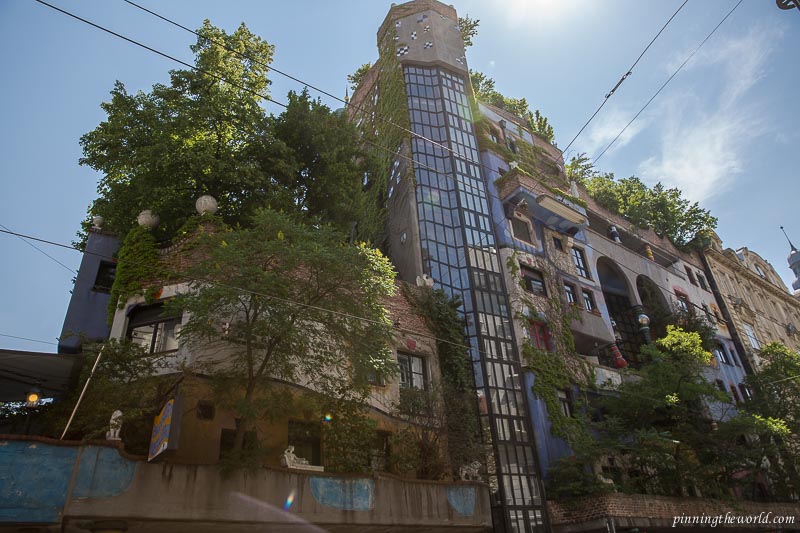
The other side of the building. I love how most of his buildings have some sort of tower structure incorporated in them

Green and foliage friendly to the max…
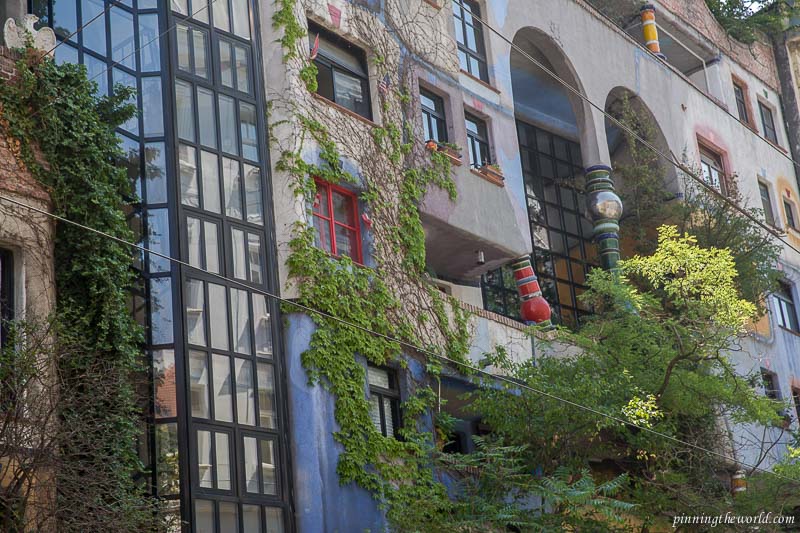
Crooked pillars work too 😉
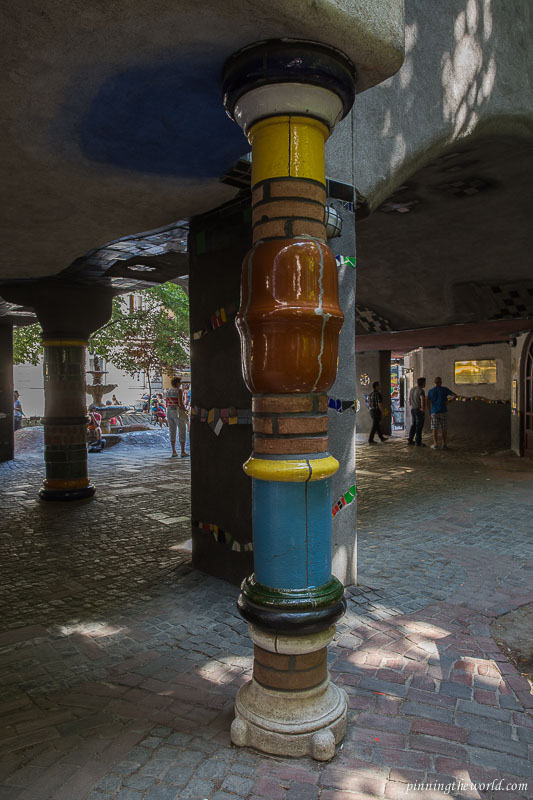
Some more colourful pillars…
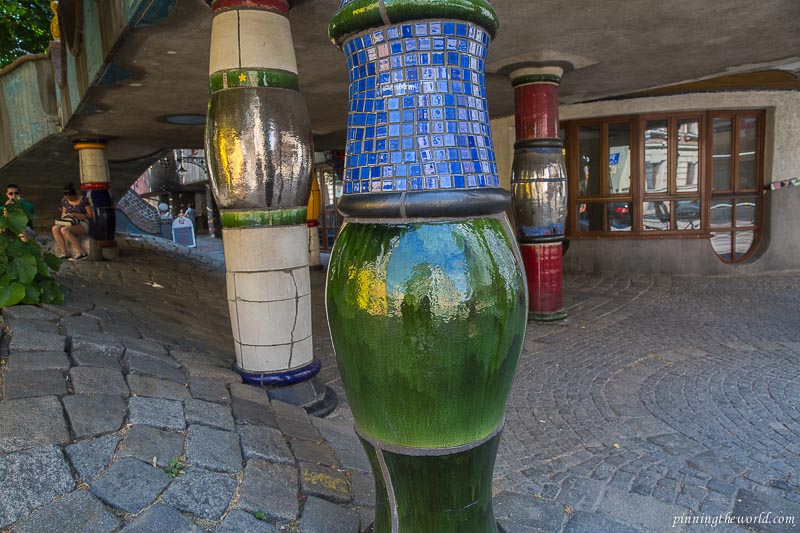
No two pillars are the same…no room for monotony here
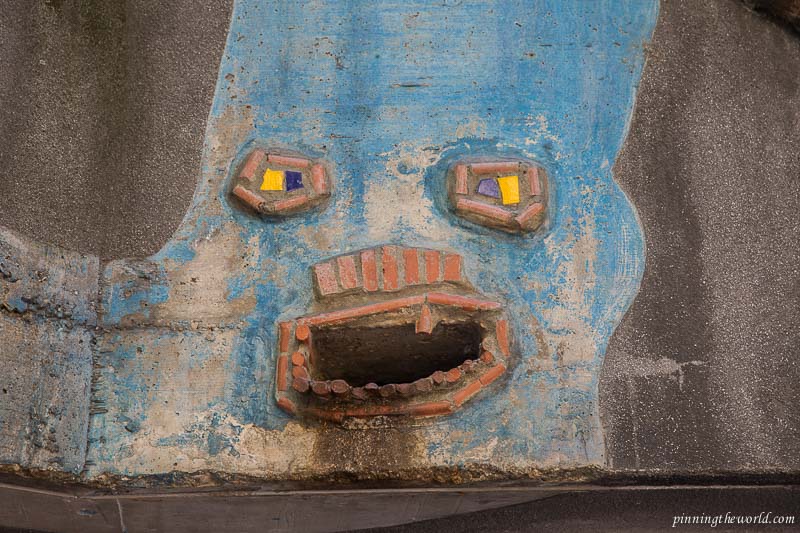
Attention to detail – a drain hole for letting excessive water out
The cosy Hundertwasser village
Just opposite to the apartment building is Hundertwasser village. It is more of a mini shopping mall but with a very local, cosy and ethnic feel. In fact it is an antithesis to the modern day shopping mall. It somehow seemed proper to use the dutch work “gezellig” (close English equivalent is “cosy” but it has much more to it than that) here. Inside the village you will find a lot of souvenir shops and art shops. Many of these shops sell books and copies of Hundertwasser’s works. In the centre of the village was a cool bar. The bar is further proof that Hundertwasser hated straight lines. I liked how the open brick work was combined with the colorful pillars, whitewashed walls, organically inspired staircases and the skylight. Even the toilet bears his signature style but you will have to shell a few cents to witness this. We didn’t have the privilege to go to the roof of the village but the pictures showed that there was almost a mini forest up there.
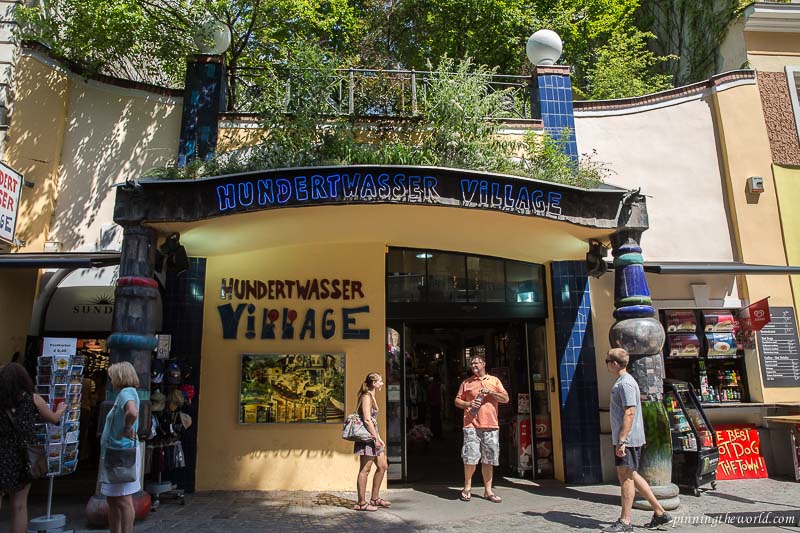
Hundertwasser village
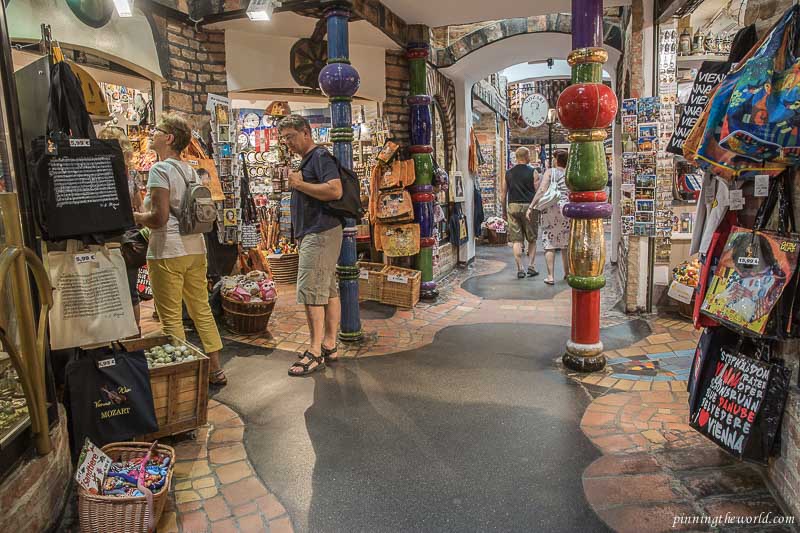
Hundertwasser village has the feel of a romantic, oriental bazar but with the artist’s signature touch
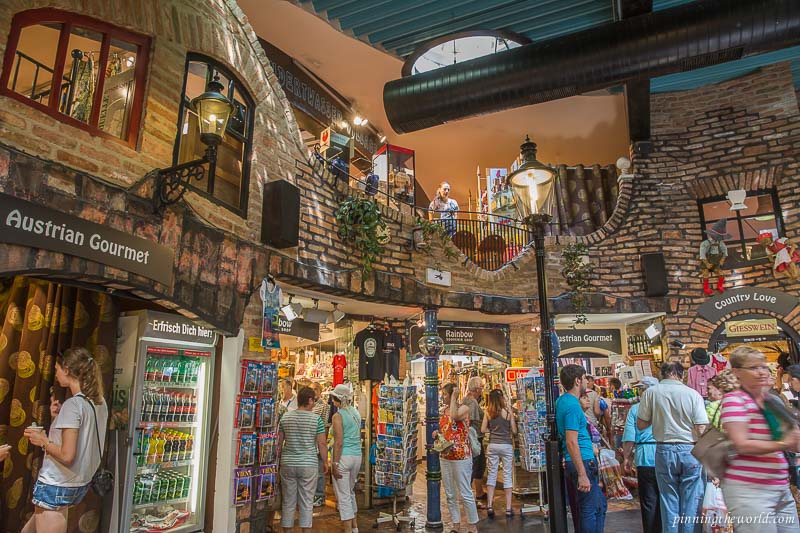
The place is filled with souvenir shops and art galleries

The cool central bar
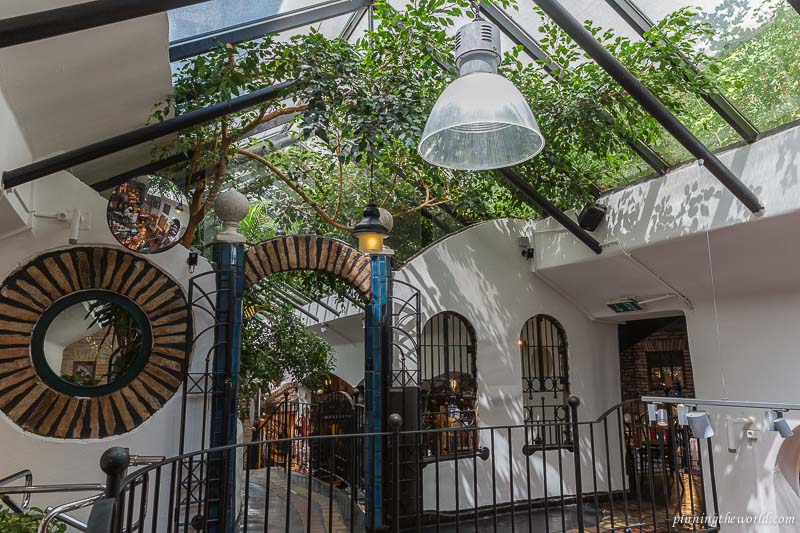
I really like the combination of the exposed bricks, the whitewashed walls with the glass roof panels
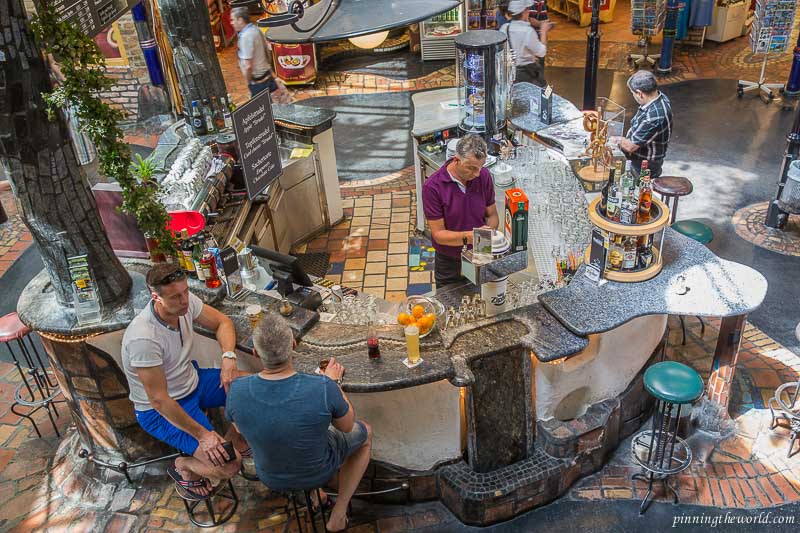
No room for straight lines!
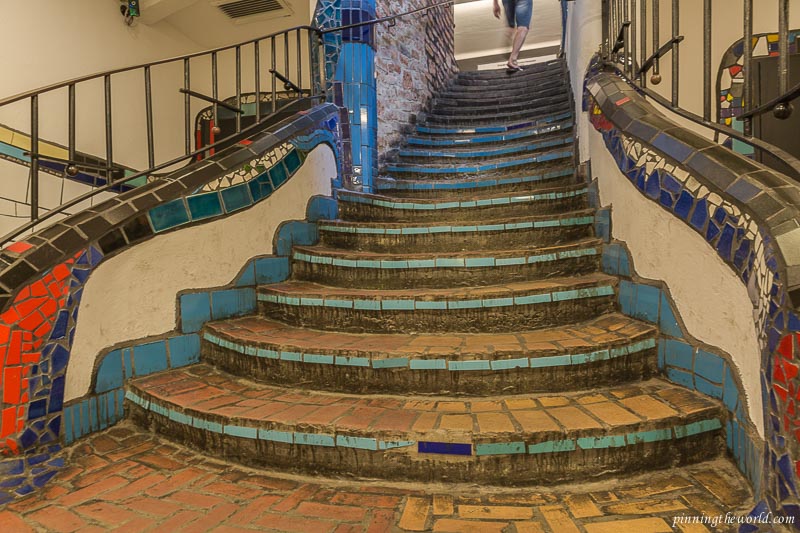
Organic shaped steps at Hundertwasser village – à la Gaudi
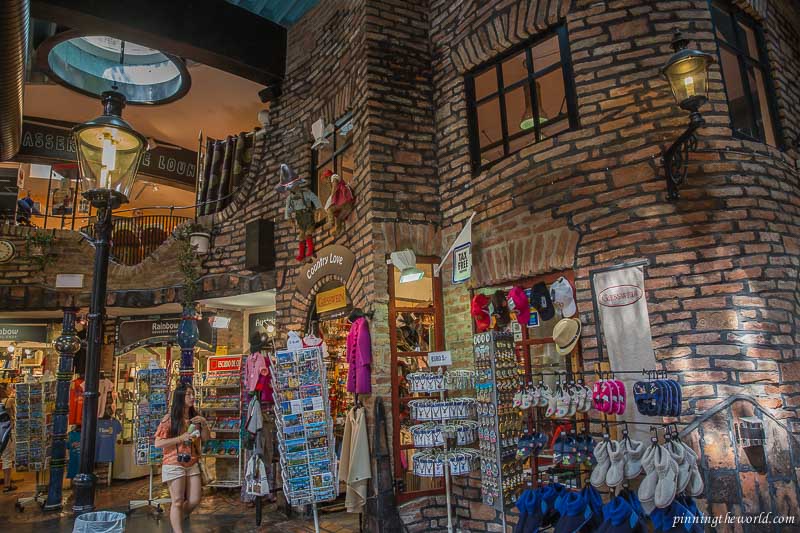
Plenty of options for sovenir shopping
Museum dedicated to Hundertwasser’s works
A few hundred metres away from the Hundertwasser haus is a museum known as KunstHaus Wien. This is the only museum in the world that has a permanent exhibition of his works. But unfortunately we didn’t have time for the museum although we passed by it. Needless to say it was another foliage friendly building lavishly decorated with colorful mosaics in his signature style. The floor outside Hundertwasser museum is again a wavy, undulating one. Even the bollards outside the building are a little crooked so as to avoid straight lines i guess.
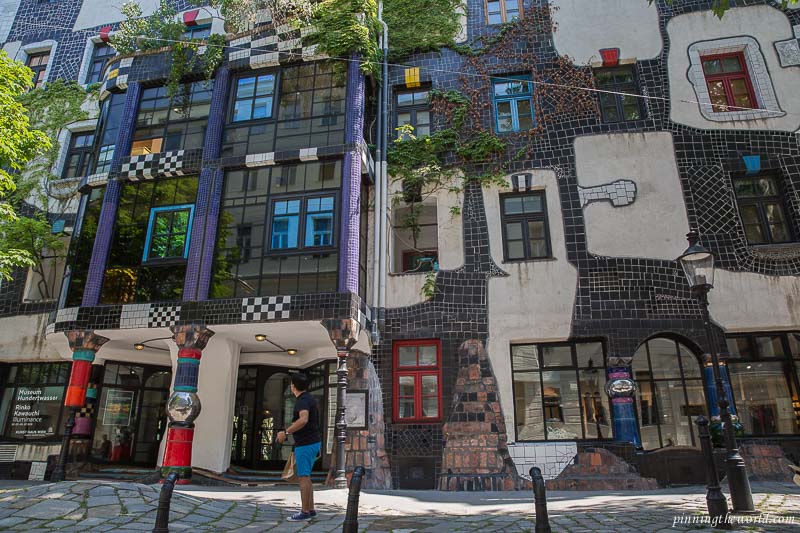
Kunst Haus Wien, also known as Hundertwasser museum
Other works of the artist
I also learnt about Hundertwasser’s other works across Austria and rest of the world. I did manage to see one of his other buildings although just fleetingly while traveling on the metro the day before. It caught my eye due to its unique shape and colors. Later i learnt that this was a waste treatment plant. All his works look like they are straight out of a kids story book. The man had a thing for incorporating towers and onion shaped domes in his works. He was never shy of using bright colors and shiny silver and gold mosaics. And what is more is that all his buildings are built in perfect harmony with nature, with earth and green grass on the roof tops or a tree in the centre of a building or spreading its arms out of a window.
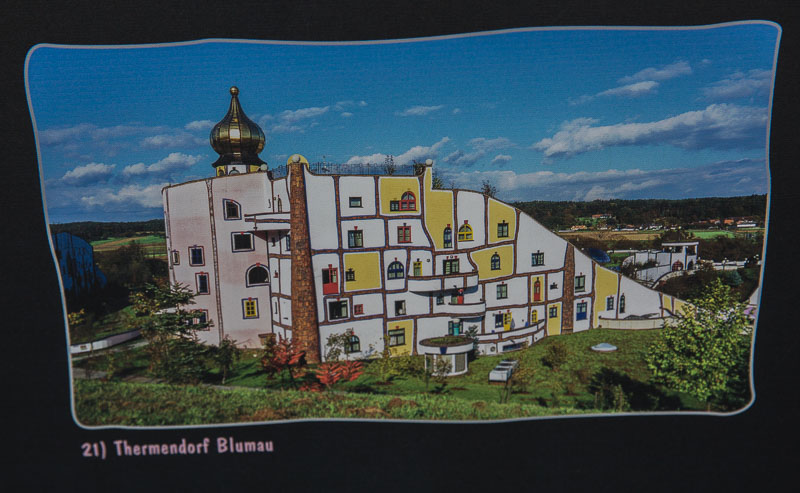
Thermendorf Blumau – A hotel and a spa resort
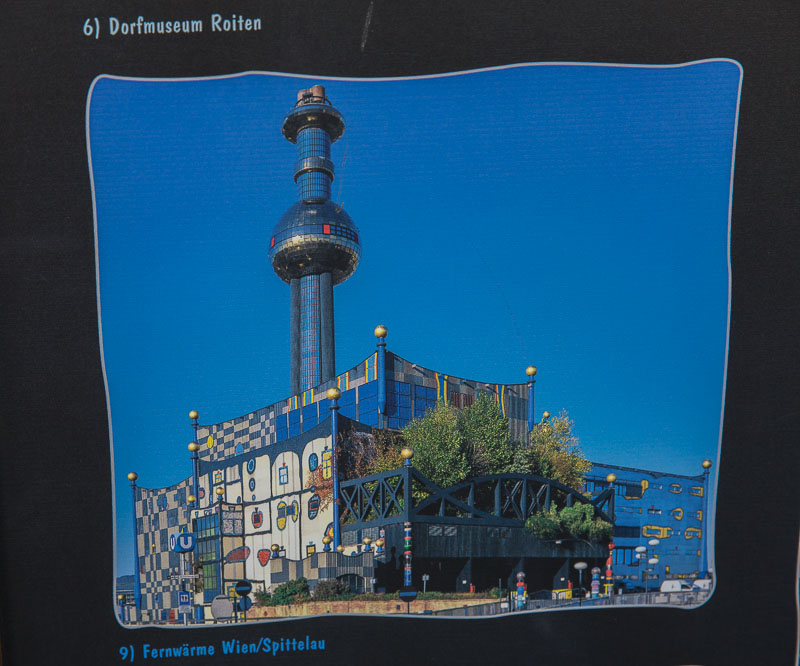
Thermal waste treatment plant in Spittelau, Vienna
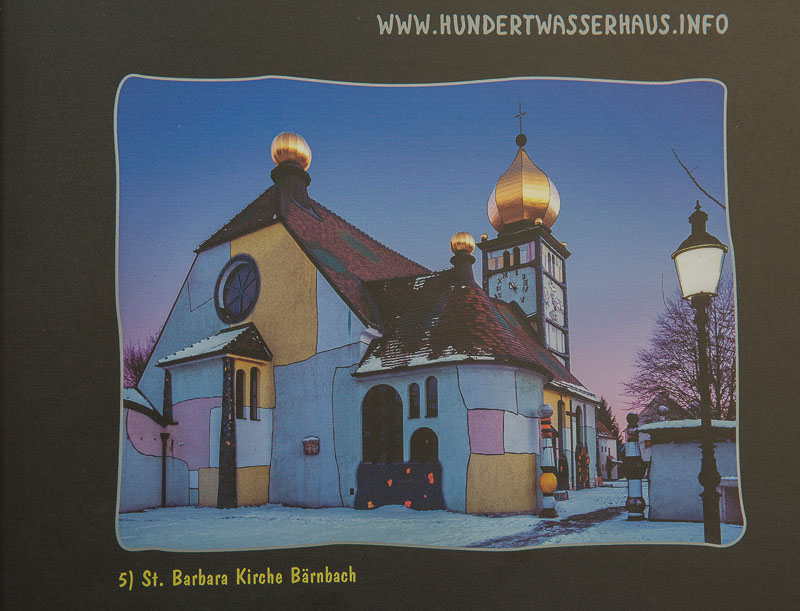
St. Barbara church at Barnbach, Austria
Even though Hundertwasser haus was streaming with tourists this place had such a positive and happy vibe to it. I was fascinated and intrigued by his imagination and creative genius. Don’t miss this if you are in Vienna, it is an unique work of art!
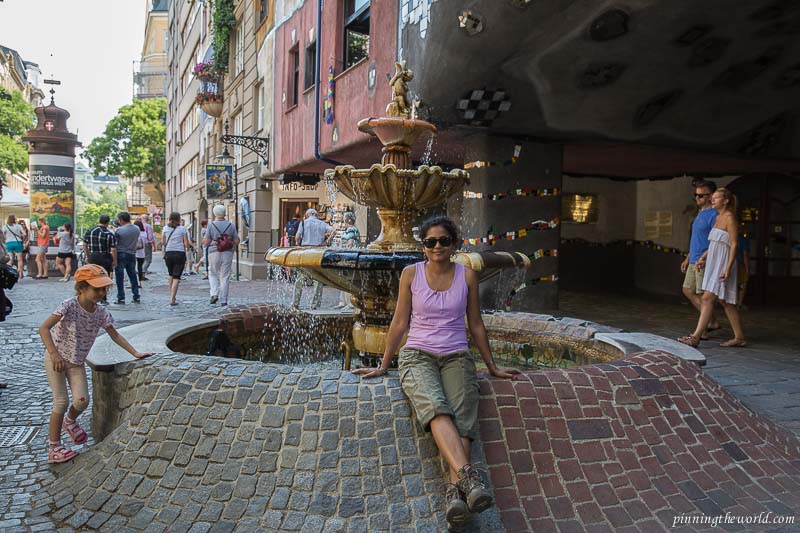
A happy me at Hunderwasser haus
Have you been to Hundertwasser haus in Vienna? What did you think of it. Chime in via the comments section below 🙂